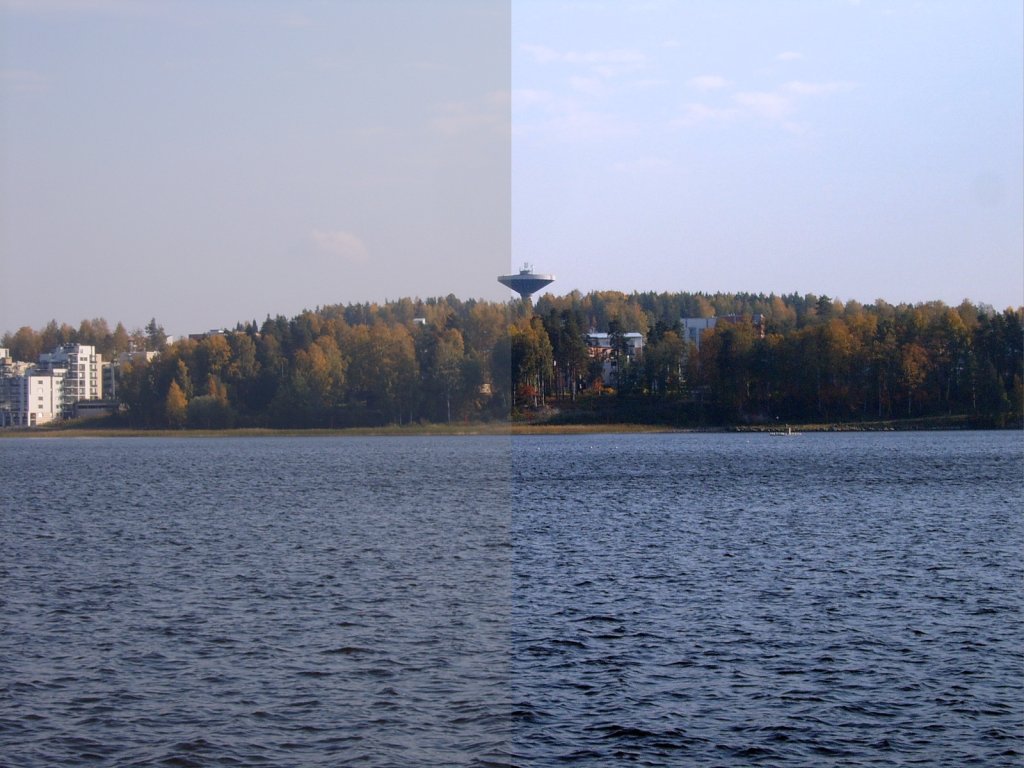|
Bezold Effect
The Bezold effect is an optical illusion, named after a German professor of meteorology Wilhelm von Bezold (1837–1907), who discovered that a color may appear different depending on its relation to adjacent colors. It happens when small areas of color are interspersed. An assimilation effect called the von Bezold spreading effect, similar to spatial color mixing, is achieved. The opposite effect is observed when large areas of color are placed adjacent to each other, resulting in color contrast. See also * White's illusion White's illusion is a brightness illusion where certain stripes of a black-and-white grating are partially replaced by a gray rectangle (see the figure). Both of the gray bars of A and B have the same color and opacity. The brightness of the gray ... References * Albers, J. ''Interaction of color'': unabridged text and selected plates. 8. ed. Massachusetts: Yale University Press, 1978. *Echo Productions. ''Wilhelm von Bezold''. Virtual color museum.* ... [...More Info...] [...Related Items...] OR: [Wikipedia] [Google] [Baidu] |
Optical Illusion
Within visual perception, an optical illusion (also called a visual illusion) is an illusion caused by the visual system and characterized by a visual perception, percept that arguably appears to differ from reality. Illusions come in a wide variety; their categorization is difficult because the underlying cause is often not clear but a classification proposed by Richard Gregory is useful as an orientation. According to that, there are three main classes: physical, physiological, and cognitive illusions, and in each class there are four kinds: Ambiguities, distortions, paradoxes, and fictions. A classical example for a physical distortion would be the apparent bending of a stick half immerged in water; an example for a physiological paradox is the motion aftereffect (where, despite movement, position remains unchanged). An example for a physiological fiction is an afterimage. Three typical cognitive distortions are the Ponzo illusion, Ponzo, Poggendorff illusion, Poggendorff, an ... [...More Info...] [...Related Items...] OR: [Wikipedia] [Google] [Baidu] |
Wilhelm Von Bezold
Johann Friedrich Wilhelm von Bezold (June 21, 1837 – February 17, 1907) was a German physicist and meteorologist born in Munich, Kingdom of Bavaria. He is best known for discovering the Bezold effect and the Bezold–Brücke shift. Bezold studied mathematics and physics at the University of Munich and the University of Göttingen. He taught meteorology in Munich from 1861, becoming a professor in 1866. In 1868 he began teaching at the Technical University of Munich. In 1875, he was named a member of the Bavarian Academy of Sciences. From 1885 to 1907 director of the Prussian Institute of Meteorology at the University of Berlin. As a scientist, he was mainly interested in the physics of the atmosphere, and he contributed much to the theory of electrical storms. Bezold was one of the early researchers of atmospheric thermodynamics. He considered pseudo-adiabatic processes describing air as it is lifted, expands, cools, and eventually condenses and precipitates its water v ... [...More Info...] [...Related Items...] OR: [Wikipedia] [Google] [Baidu] |
Spatial Color Mixing
Spatial may refer to: *Dimension *Space *Three-dimensional space Three-dimensional space (also: 3D space, 3-space or, rarely, tri-dimensional space) is a geometric setting in which three values (called ''parameters'') are required to determine the position of an element (i.e., point). This is the informal ... See also * * {{disambig ... [...More Info...] [...Related Items...] OR: [Wikipedia] [Google] [Baidu] |
Color Contrast
Contrast is the contradiction in luminance or colour that makes an object (or its representation in an image or display) distinguishable. In visual perception of the real world, contrast is determined by the difference in the colour and brightness of the object and other objects within the same field of view. The human visual system is more sensitive to contrast than absolute luminance; we can perceive the world similarly regardless of the huge changes in illumination over the day or from place to place. The maximum ''contrast'' of an image is the contrast ratio or dynamic range. Images with a contrast ratio close to their medium's maximum possible contrast ratio experience a ''conservation of contrast'', wherein any increase in contrast in some parts of the image must necessarily result in a decrease in contrast elsewhere. Brightening an image will increase contrast in dark areas but decrease contrast in bright areas, while darkening the image will have the opposite effect. Blea ... [...More Info...] [...Related Items...] OR: [Wikipedia] [Google] [Baidu] |
White's Illusion
White's illusion is a brightness illusion where certain stripes of a black-and-white grating are partially replaced by a gray rectangle (see the figure). Both of the gray bars of A and B have the same color and opacity. The brightness of the gray pieces appear to shift toward the brightness of the top and bottom bordering stripes. This is in apparent opposition to lateral inhibition, as it cannot explain this occurrence. This occurs even when the gray patches in the black stripes are bordered by more white than black (and conversely for the gray patches in the white stripes). A similar illusion occurs when the horizontal strips have different colors; this is known as Munker–White's illusion or Munker's illusion, which are based on the Bezold effect. Lateral inhibition The amount of each bipolar cell response depends on the amount of the stimulation it receives from the receptor and the amount that this response is decreased by the lateral inhibition it receives from its neighbor ... [...More Info...] [...Related Items...] OR: [Wikipedia] [Google] [Baidu] |
Optical Illusions
Within visual perception, an optical illusion (also called a visual illusion) is an illusion caused by the visual system and characterized by a visual percept that arguably appears to differ from reality. Illusions come in a wide variety; their categorization is difficult because the underlying cause is often not clear but a classification proposed by Richard Gregory is useful as an orientation. According to that, there are three main classes: physical, physiological, and cognitive illusions, and in each class there are four kinds: Ambiguities, distortions, paradoxes, and fictions. A classical example for a physical distortion would be the apparent bending of a stick half immerged in water; an example for a physiological paradox is the motion aftereffect (where, despite movement, position remains unchanged). An example for a physiological fiction is an afterimage. Three typical cognitive distortions are the Ponzo, Poggendorff, and Müller-Lyer illusion. Physical illusions ... [...More Info...] [...Related Items...] OR: [Wikipedia] [Google] [Baidu] |
Color
Color (American English) or colour (British English) is the visual perceptual property deriving from the spectrum of light interacting with the photoreceptor cells of the eyes. Color categories and physical specifications of color are associated with objects or materials based on their physical properties such as light absorption, reflection, or emission spectra. By defining a color space, colors can be identified numerically by their coordinates. Because perception of color stems from the varying spectral sensitivity of different types of cone cells in the retina to different parts of the spectrum, colors may be defined and quantified by the degree to which they stimulate these cells. These physical or physiological quantifications of color, however, do not fully explain the psychophysical perception of color appearance. Color science includes the perception of color by the eye and brain, the origin of color in materials, color theory in art, and the physics of ele ... [...More Info...] [...Related Items...] OR: [Wikipedia] [Google] [Baidu] |



